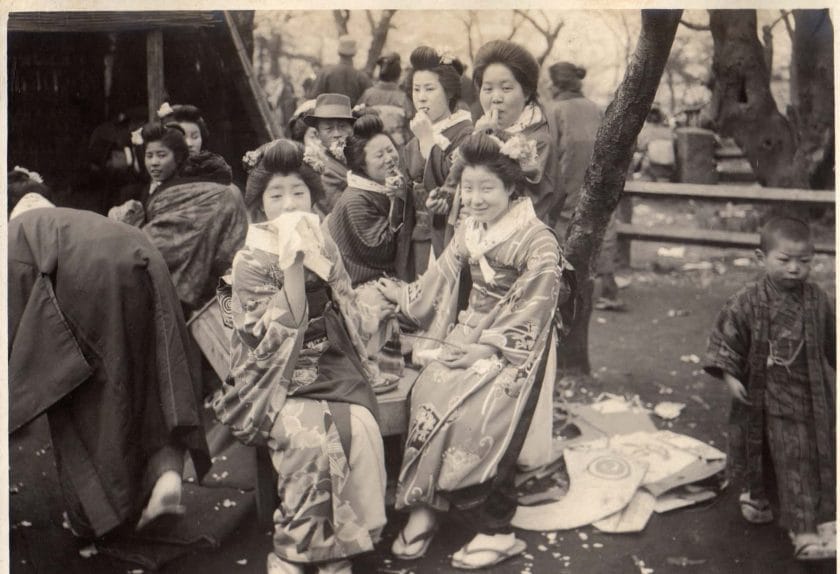Japan has long been renowned for its impeccable sense of style and fashion. From avant-garde streetwear to traditional kimono designs, the nation’s fashion scene has captivated the world. In this article, we will explore the reasons behind Japan’s unrivaled reputation as a global fashion powerhouse, delving into its rich cultural heritage, innovative approach to design, and the influence of Japanese subcultures.
Japan’s Fashion Industry: Gaining International Recognition
Japan’s fashion industry has been making waves on the global stage, gaining recognition for its unique and innovative designs. With a rich cultural heritage and a penchant for pushing boundaries, Japanese fashion designers have captured the attention of fashion enthusiasts worldwide.
One factor that sets Japan’s fashion industry apart is its ability to seamlessly blend traditional elements with modern aesthetics. Designers often draw inspiration from traditional Japanese clothing such as kimono and yukata, incorporating their intricate patterns and silhouettes into contemporary designs. This fusion of old and new creates a captivating juxtaposition that appeals to both local and international consumers.
Moreover, Japan’s fashion industry has been quick to embrace technology and incorporate it into their designs. From high-tech fabrics that regulate body temperature to wearable tech accessories, Japanese designers are at the forefront of innovation in the fashion world.
Another reason for Japan’s growing influence in the global fashion scene is its street style culture. Tokyo, in particular, is known for its vibrant street fashion districts like Harajuku and Shibuya, where young people express their individuality through bold outfits and creative styling. This street style culture has not only influenced local trends but has also caught the attention of international fashion influencers and designers.
The Rise of Japanese Streetwear Brands
In recent years, Japanese streetwear brands have gained significant popularity worldwide. Labels like A Bathing Ape (BAPE), Comme des Garçons, and Neighborhood have become synonymous with cutting-edge urban fashion.
Japanese streetwear is characterized by its edgy aesthetic, often featuring oversized silhouettes, graphic prints, and unconventional materials. These brands have successfully tapped into the demand for unique and statement-making pieces that cater to a younger demographic.
Key Elements of Japanese Streetwear
- Graphic Prints: Japanese streetwear often incorporates bold and eye-catching graphic prints, ranging from anime characters to abstract designs.
- Oversized Silhouettes: Loose-fitting and oversized garments are a common feature in Japanese streetwear, creating a relaxed and effortless look.
- Unconventional Materials: Japanese streetwear brands experiment with unconventional materials like neoprene, PVC, and reflective fabrics to add an element of surprise to their designs.
- Collaborations: Collaborations between Japanese streetwear brands and other fashion or lifestyle labels are highly sought after, creating limited-edition pieces that attract collectors and enthusiasts.
Overall, Japan’s fashion industry continues to captivate the world with its unique blend of tradition, innovation, and individuality. Whether it’s through traditional clothing inspired designs or cutting-edge streetwear brands, Japan’s influence on global fashion is undeniable.
Popular Japanese Fashion Brands Known Worldwide
Japanese fashion brands have gained international recognition for their unique designs and high-quality craftsmanship. One such brand is Comme des Garçons, founded by designer Rei Kawakubo. Known for its avant-garde and unconventional approach to fashion, Comme des Garçons has become a symbol of Japanese creativity in the industry. Another popular brand is Uniqlo, which focuses on minimalist and functional clothing that appeals to a wide range of consumers. With its affordable prices and collaborations with renowned designers, Uniqlo has successfully expanded its presence globally.
H3: The Rise of Japanese Streetwear
In recent years, Japanese streetwear brands like A Bathing Ape (BAPE) and Neighborhood have gained popularity worldwide. These brands incorporate elements from hip-hop culture and graffiti art into their designs, creating a unique fusion of street style and Japanese aesthetics. Their success can be attributed to their ability to capture the spirit of urban youth culture and appeal to a global audience.
The Influence of Traditional Japanese Clothing on Modern Fashion Trends
H3: Kimono: A Timeless Inspiration
The kimono, a traditional Japanese garment, continues to inspire modern fashion trends around the world. Its elegant silhouette, intricate patterns, and use of luxurious fabrics have influenced designers across different cultures. From runway shows to red carpet events, the kimono’s influence can be seen in various adaptations such as kimono-inspired dresses or incorporating traditional motifs into contemporary designs.
Exploring Harajuku Fashion: Its Significance in Japan
H3: The Evolution of Harajuku Fashion Styles
Harajuku fashion is known for its boldness and eccentricity, often characterized by vibrant colors, mix-and-match patterns, and unique accessories. It has become a symbol of self-expression and creativity in Japan, attracting both locals and tourists alike. From the playful Lolita fashion to the edgy punk-inspired styles, Harajuku is a hub for fashion subcultures that continuously evolve and inspire new trends.
H4: The Influence of Kawaii Culture
One of the key elements of Harajuku fashion is its connection to kawaii culture, which celebrates cuteness and childlike innocence. This influence can be seen in the use of pastel colors, oversized bows, and adorable character motifs in Harajuku fashion. Kawaii culture has not only influenced fashion but also permeated various aspects of Japanese popular culture, including music, art, and advertising.
Street Style: Shaping Japan’s Fashion Scene
H3: Tokyo Street Style Icons
Tokyo street style has gained global recognition for its unique blend of high fashion and streetwear. Influential figures like Hiroshi Fujiwara and Nigo have played significant roles in shaping this distinctive style through their brands Fragment Design and A Bathing Ape (BAPE), respectively. Their innovative designs and collaborations have attracted attention from fashion enthusiasts worldwide, making Tokyo a prominent city in the street style scene.
Japanese Designers Revolutionizing the Global Fashion Industry
H3: Rei Kawakubo’s Impact on Fashion
Rei Kawakubo, founder of Comme des Garçons, is renowned for challenging traditional notions of beauty and pushing boundaries in fashion design. Her unconventional approach has inspired countless designers around the world to think outside the box and create avant-garde collections. Kawakubo’s impact can be seen through her collaborations with luxury brands like Louis Vuitton and her influence on runway shows globally.
Cultural Factors Contributing to Japan’s Unique Sense of Style and Aesthetics
H3: Zen Philosophy and Fashion
Japanese fashion often incorporates elements of Zen philosophy, emphasizing simplicity, balance, and harmony. This minimalist approach can be seen in the clean lines, neutral color palettes, and attention to detail in Japanese designs. The influence of Zen philosophy extends beyond clothing and permeates other aspects of Japanese culture, such as interior design and tea ceremonies.
The Influence of Anime and Manga on Japanese Fashion Trends
H3: Cosplay Culture and Fashion
Anime and manga have had a significant impact on Japanese fashion trends through cosplay culture. Cosplay enthusiasts dress up as their favorite characters from anime or manga series, often attending conventions or events dedicated to this subculture. This influence has extended beyond cosplay events, with elements of anime-inspired fashion seen in street style and collaborations between fashion brands and popular anime franchises.
Inspiration from Traditional Crafts: Kimono-making and Contemporary Designs
H3: The Artistry of Kimono-making
Kimono-making is a traditional craft that requires meticulous craftsmanship and attention to detail. Many contemporary designers draw inspiration from this art form, incorporating kimono elements into their designs. From using traditional dyeing techniques like shibori to incorporating obi belts or kimono sleeves into modern garments, these designers pay homage to the rich history of kimono-making while creating unique contemporary pieces.
Tokyo Fashion Week: Promoting Japanese Fashion Internationally
H3: Emerging Designers Showcasing Talent
Tokyo Fashion Week provides a platform for emerging Japanese designers to showcase their talent on an international stage. It attracts industry professionals from around the world who are eager to discover new and innovative designs. This event not only promotes Japanese fashion but also contributes to the global fashion industry by fostering creativity and nurturing young talents.
Expressing Individuality through Fashion Choices in Japan’s Youth Culture
H3: The Influence of Street Fashion
In Japan’s youth culture, street fashion has become a means of self-expression and identity. From the rebellious style of the Visual Kei movement to the gender-neutral fashion of the Mori Boy trend, young people in Japan use clothing as a way to break societal norms and showcase their individuality. This diverse range of styles reflects the ever-changing nature of Japanese youth culture.
The Role of Gender Neutrality and Fluidity in Japan’s Fashionable Culture
H3: Breaking Gender Stereotypes
Japanese fashion has been at the forefront of challenging traditional gender norms by embracing gender neutrality and fluidity. Designers like Toga, Yohji Yamamoto, and Sacai have incorporated elements traditionally associated with both masculine and feminine aesthetics into their collections. This shift towards breaking down gender stereotypes in fashion allows individuals to express themselves freely without conforming to societal expectations.
Incorporating “Wabi-Sabi” Philosophy into Japanese Fashion Design
H3: Embracing Imperfection
Japanese fashion often embraces the concept of “wabi-sabi,” which appreciates imperfections and transience. Designers incorporate elements such as asymmetry, raw edges, or natural materials that age gracefully over time. This philosophy encourages a deeper connection with clothing by valuing uniqueness and embracing flaws rather than striving for perfection.
Defining Minimalistic and Avant-Garde Styles in Japanese Fashion
H3: The Aesthetic of Minimalism
Minimalistic fashion has become synonymous with Japanese design, characterized by clean lines, monochromatic color palettes, and simplicity. Designers like Yohji Yamamoto and Issey Miyake have mastered this aesthetic, creating timeless pieces that prioritize functionality and understated elegance. On the other end of the spectrum, Japanese avant-garde fashion pushes boundaries through experimental silhouettes, unconventional materials, and thought-provoking designs.
In conclusion, Japan’s fashion scene is renowned for its unique and stylish trends that captivate the world. From streetwear to traditional garments, Japanese fashion constantly pushes boundaries and inspires creativity. If you’re looking to embrace this fashionable culture, don’t forget to check out our amazing cosplay products! Whether you’re a fan of anime or just want to add some Japanese flair to your wardrobe, we’ve got you covered. Get in contact with us today and let’s embark on a fashionable journey together!

Why is Japanese fashion so popular?
These innovative fashion designers played a significant role in putting Japanese fashion on the map and achieving worldwide recognition and success through their unconventional, gender-neutral, and androgynous designs. Additionally, Japanese street fashion culture serves as a major source of inspiration for Japanese creators.
Why is Japanese fashion unique?
Japanese fashion designers like Yohji Yamamoto and Rei Kawakubo, known for their minimalist style, have become strongly associated with avant-garde fashion. They regularly present their innovative creations on global runways, incorporating asymmetrical cuts, draping, and the clever use of monochromatic color schemes.

What is the most fashionable city in Japan?
Tokyo is renowned for its unique and daring fashion, making it the fashion hub of Asia and the birthplace of many globally recognized businesses. Additionally, it boasts the second-largest luxury market globally, second only to the United States.
Is fashion important in Japan?
Nov 22, 2018: The Japanese population is renowned for their fashion-forward culture, with a strong emphasis on personal appearance and grooming. Many men and women in Japan prioritize fashion and style.
What American fashion is popular in Japan?
Over the past few decades, specific fashion trends like Ivy-league prep, Mid and Southwest workwear, and American army apparel have become essential elements in Japanese streetwear culture.
Why is Japan so aesthetically pleasing?
Shinto and Buddhism have had a significant impact on Japanese aesthetics, particularly in their focus on the harmony of nature, moral character, and appreciation of the natural landscape. Shinto was the dominant influence on Japanese aesthetics until the thirteenth century.








